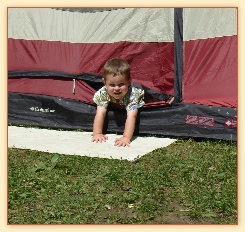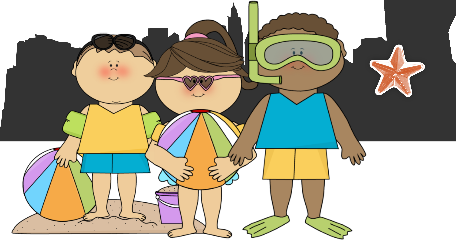

Best Family Tent
Get some friendly tips on how to choose the best tent for your family.
Water Safety Tips
Read some great suggestions on keeping your kids safe by the water.

"Remember the Hyphens"

Travel-With-Your-Kids.com © 2014 Travel-With-Your-Kids.com
Links | Terms and Conditions | Share with us! | Sign-Up for our newsletter!






Water safety and kids is an important subject. Some of the information may surprise you. Learn how to keep your children safe while around water this year.
Water Safety Tips




Because many families plan time in the water into their vacation plans. Whether it is a day at the beach, camping by the lake, jumping in the ocean waves, or hanging out in the pool at the resort, for parents and children alike it can be a highlight to look forward to.
When families are larger, water can offer an entertainment option excitedly greeted by everyone from 1 to 100.
We often choose where we stay as a family based on the water around. Does the hotel have a waterslide? Is there a beach at the campground? Does the RV park have a pool?
As a family, one of our favorite day outings involves a couple hours at the Rec Center for a swim before or after other activities. Especially right before bed. Putting PJs on in the changeroom and crawling into the truck often leads to ½ our little heads asleep before we reach the driveway.
Swimming can be great exercise offering entertainment and laughter. A vacation 'dream come true'.
So what can we do to ensure our dream doesn't turn into a nightmare?
If you haven't already, I encourage you to read the first part of this article here. It helps address many of the myths we all seem to have surrounding water safety and our kids. With the right frame of mind, we can then evaluate our own family rules, move forward, and address the changes we each can make to improve our children's safety in the water.
Let's look at the top 10 ways to improve kids water safety.
You can find several articles online to educate yourself about this reflex. Personally, this article wirtten by Mario Vittone was easy to understand and well-written, so I have included the details of how to identify IDR here:
- Except in rare circumstances, drowning people are physiologically unable to call out for help. The respiratory system was designed for breathing. Speech is the secondary or overlaid function. Breathing must be fulfilled, before speech occurs.
- Drowning people's mouths alternately sink below and reappear above the surface of the water. The mouths of drowning people are not above the surface of the water long enough for them to exhale, inhale, and call out for help. When the drowning people's mouths are above the surface, they exhale and inhale quickly as their mouths start to sink below the surface of the water.
- Drowning people cannot wave for help. Nature instinctively forces them to extend their arms laterally and press down on the water's surface. Pressing down on the surface of the water, permits drowning people to leverage their bodies so they can lift their mouths out of the water to breathe.
- Throughout the Instinctive Drowning Response, drowning people cannot voluntarily control their arm movements. Physiologically, drowning people who are struggling on the surface of the water cannot stop drowning and perform voluntary movements such as waving for help, moving toward a rescuer, or reaching out for a piece of rescue equipment.
- From beginning to end of the Instinctive Drowning Response people's bodies remain upright in the water, with no evidence of a supporting kick. Unless rescued by a trained lifeguard, these drowning people can only struggle on the surface of the water from 20 to 60 seconds before submersion occurs.
CPR saves lives and improves the outcome for drowning victims. If you have never taken a course, or it has been 3 or more years since you have taken it, take the course. Have your children take the course. In many areas, children as young as 10 years old can be trained in CPR.
If your children will be in someone else's care around the water, find out if anyone there will be trained in CPR. If not, offer to come along and help supervise.
There was another detail about the drowning story I shared with you that directly affected the young girl's chance of survival. She was actually found twice before my daughter saw her and called for help.
A younger child saw her not once, but twice. After seeing a couple of his older friends playing 'sit on the bottom of the deep end and hold your breath' game, he simply assumed that's what she was playing and thought nothing of it. She might have been. No one knows what happened.
The little girl was under that water for a full minute between the first time and the last time she was spotted. A minute can mean the difference between life and death.
Not only can Breath Holding games cause "Shallow Water Blackout" (even in deep water), but observers may not know your child, or another one, is in distress when they are known to play that game. They may be left for minutes before someone calls for help.
A game where people intentionally hyperventilate before jumping in the water is equally dangerous, and should never be played by anyone.
Talk to your kids about water safety. Teach them about IDR. Show them You Tube videos of children drowning (age appropriately) so that they know what to look for. Teach them how to yell for help. Shouting "Help! Someone is Drowning!" is an excellent phrase to teach them. It draws a lot of good attention. Explain that if they are seriously concerned about someone, and not "crying wolf", that no one will be upset if they are wrong.
Remember the game that big kids play by sitting on the bottom of the pool? Don't wait to see if they are playing or not. Teach your child to point out to an adult or lifeguard if ANY child is at the bottom of the pool.
Talk to your children about alcohol use around water. And remember, actions speak louder than words.
80% of all drownings are males. Talk to your kids about that. Though males tend to be stronger swimmers, more of them are drowning. Ask your kids why they think that is. Talk about the behaviors that lead to this statistic.
This was one of the more encouraging statistics I was able to come across - only 3% of children who drown are identified as strong swimmers. The CDC also says "Taking part in in formal swimming lessons reduces the risk of drowning among children aged 1 to 4 years."
If you don't know how to swim, take lessons yourself. No one is too young or too old for swimming lessons.
Look in your area if ISR Self-Rescue swimming lessons are available in your area. From 6 months to 6 years old, they teach the skills and competence to prevent drowning.
Children drown in backyard pools 5 times more than in public pools. 34% of drownings are at people's homes. Remembering that 70% of drownings involve children who don't intend to be in the water, over 70% of backyard pool drownings involve fences &/or gates that do not meet bylaw standards.
To be properly safe, a backyard pool should be fenced on all 4 sides, have self-closing and self-latching gates, and all gates should be locked at all times when no one is directly supervising the pool.
It is important to never leave pool toys or interesting looking items on the pool deck or floating in the water. Young children are attracted to toys and can be heavily motivated to get to them whether they are allowed to go there or not. "The toys are always brighter on the other side".
Remember: Water safety starts anytime there is water nearby.
The ground under the shoreline can be unpredictable. We personally had an incident where an underwater hole at one of our favorite lakes had filled with soft mud about 1 foot away from the water's edge. While our son was running along the beach, he ran right into it and went from ankle-deep water to chest-deep water in the blink of an eye. With nowhere firm to plant his hands while falling, his arms and head were quickly under the water. Thankfully, we were in arm's reach to pull him out, and the situation did not become an emergency.
If your young children are near the water's edge, have them wear a lifejacket.
This should also include anytime ANY of your children are on a boat. Though 98% of parents feel children should always be wearing a lifejacket in a boat, over 80% of children who drown while boating were not wearing a lifejacket. Even more alarming is in half these cases, there wasn't even a lifejacket on the boat for that child!
Clearly, we all know it's the right thing to do. This is one of those times to simply put into water safety practice what is known: A lifejacket only works when you're wearing it.
62% of parents polled believe they can effectively supervise a child in the water while under the influence of alcohol, even though we know that alcohol influences balance, coordination, and judgment, and its effects are heightened by sun exposure and heat.
Did you know that alcohol is involved in over 70% of water-related deaths of adults AND adolescents, and is involved in almost 25% of ER visits for drowning. If you remember, one-third of children who drown are between 15 and 19. 70% of 1/3 of all child drownings is a big number.
This age is often recommended at 7 or 8 years old - not just preschoolers. It may seem over-the-top if you are not already used to staying in contact with your elementary-aged children, but it is no unnecessary step.
However, the younger the child, the more important this is. Children under 2 only need a few inches of water to drown in if they are unable to get their hands underneath them and lift their head above the water.
Also, do not over-trust life jackets with young children - even in shallow water. If the child is small enough (we witnessed it personally with a 4 year old), if they end up face-down in the water, the life jacket instead of protecting them, can become their worst enemy. It effectively holds their face under the water, and their legs high enough up that they cannot get their feet to touch the ground to stand up.
Before you trust your child in a life jacket, make sure they can roll themselves onto their backs, and also can get themselves into a vertical position (can potentially be easier said than done) while wearing the life jacket so they cannot be held under the water by it.
Directly supervising your children in and around the water is the #1 way to keep your children safe in the water. Of the children who died in less than 3 feet of water, more than 90% were not supervised. And up to 70% of the drownings occurred when children unintentionally entered the water. Don't only supervise them if there is a deep end - supervise them always. Anytime there is water around.
This means no distractions!! No Book, No Facebook, No Laptop, No Washing Dishes, No Mowing the Lawn, No Going to get a Snack, Nothing.
Get in the water with your children. Sit on the side with your feet in. Let them "Look what I can do Mom!!" all day long! Show them what a great cannonball Dad can do. Build the sandcastle together, and go hand-in-hand for another bucket of water. Teach water safety in real life, not just talk about it.
Be involved. Spend quality time with your kids. And may you and your family never have to experience the tragedy of a child drowning.
Has reading this information motivated you to make a difference? There are some great things you can do to not only keep your children safe, but improve the water safety of all children.
Talk About It
Talk to your parents, your grandparents, your neighbours, friends, co-workers, and the lady on the bus. Tell them what you learned about IDR. Encourage them to learn about it and be able to identify it. Encourage others with children to update their CPR course and to enrol their children in swimming lessons.
Share the Information
Share these articles on Facebook, Twitter, or email. Or share other articles and You Tube videos about children drowning. Share the Red Cross and CDC pages. They offer great suggestions on how we can all lower the number of drowning fatalities. Help raise awareness.
Know the Demographics
Unfortunately, impoverished and uneducated families are more likely to be the victims of a child drowning than those who are informed and trained. That you are here reading this means already your child's chances of survival are greater than the average.
Encourage your local Rec Center, YMCA, Outreach Center, Church, or Town Committee to offer free information nights to help educate families who wouldn't otherwise have access to the information about water safety.
If you are in a larger city, look up who runs the inner-city programs. Encourage them to pass on the information to make a difference.
Be Thankful
The people who work to keep our children safe are often unappreciated. Thank your lifeguards. Thank SAR (Search and Rescue) workers. Thank Doctors and Nurses. Water safety is their job, and they are good at it.
Obey the rules wherever you are with your children making life as easy as possible for these great workers. One day, your family may be eternally grateful that they are so good at their jobs.

What’s Going On
See what’s happening this month at the Children’s Discovery Museum of the Desert.
Water Safety. It seems to be one of those subjects that most parents either think they have taken care of, or haven’t thought much about at all. So what is all the fuss?

6. Enroll Your Child in Swimming Lessons

7. Talk. Talk. Talk.

8. Do Not Allow Breath Holding Games

9. Learn CPR

10. Learn how to identify the Instinctive Drowning Response (IDR)

5. Have a Pool? Make Sure Your Pool is Fenced Adequately

4. Lifejackets. Have Your Children Wear Them.

3. Save the Alcohol for the After-Party.

2. Stay Within Arms Reach of ALL Young Children.

1. Supervise Your Children Directly.

WANT TO HELP?
| Water Safety |
| Water Safety Tips |
| Destinations |
| Outings |
| Camping |
| Kids' Reviews |
| Help & Support |
| Childrens Discovery Museum of the Desert |
| Childrens Disovery Museum Kids Reviews |
| Choosing a Tent |
| Lynnie |
| AJ |
| Nick |
| Matt |
| Belle |